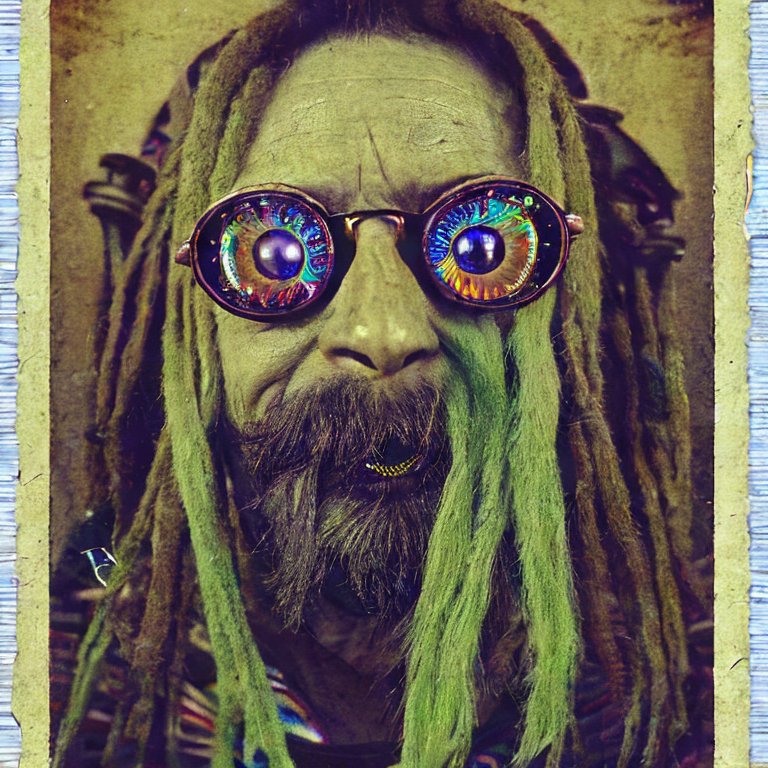E.g. music, sculpture, novel
Avoid ‘maybe’ or ‘it depends’. Take a stand!
Greedo shot first.
Both. We can’t perceive the world exactly the same way as another person. Therefore, what we make of it is also individual and every point of view is valid in its own way.
Take a Rorschach-Test, for example. There are examples most people can agree on, they show a specific thing. Others are wildly subjective. What a creator intends to invoke with their creation and what the audience receives are not necessarily the same, but that doesn’t invalidate one side’s interpretation.
Can I say neither? I would argue that a creator can’t imbue their creation with an intrinsic meaning. I’d say that it can mean something to the creator, and it can mean something to the audience, but outside any observation it’s inherently meaningless.
When you can see the universe in a pen and ink…
I believe the creator determines it and the audience interprets it. Possibly in multiple ways, including some that the artist may have never thought of or intended.
Meaning is subjective and not intrinsic, so there can be no such thing as “the” meaning of anything.
The artist can have an intended meaning, but the audience not only can but will find their own meaning in it. It might be the case that the audience gets the same meaning from it that the creator intended, but it might just as easily be the case that they get some entirely different meaning from it.
None of them are right or wrong - that’s not even a coherent concept in that context. They just are whatever they are.
Yes.
No.
Primarily the audience. The artist can approach a project with a certain set of ideas, precepts, and motivations, and attempt to communicate something, but the interpretations of the audience supercede that IMO.
That said, there’s different levels of engagement that inform different interpretations. Not the best example, but there’s some folks who watched Starship Troopers, for instance, who didn’t get that it was intended as satire until they listened to the director’s commentary. This does have an impact on interpretive activity when engaging with that knowledge - all of a sudden, certain things lend themselves to closer consideration. I do think there’s such a thing as informed and uninformed interpretation, though ideally a work stands on its own without reference to paratext/the creator’s claims.
Edit: Good counter example - The Room. Intended as a serious attempt at Tennessee Williams-esque drama, widely interpreted as an experiment in a sort of cringe comedy, seeing the reaction the writer/director/lead decides to roll with that.
Depends.
John Carpenter felt the need to explicitly state that They Live was about yuppie capitalism when the alt right was saying it was about Jews.
In Detroit: Become Human, David Cage didn’t see any parallels between the robots being forced to sit in the back of the bus and African Americans also being forced to do the same.
Then you have people like Kunihiko Ikuhara, who when asked a direct question about the meaning of his work, will give vague answers because he’d rather you figure it out for yourself.
Audience. The creator is part of the audience and will have their own valid interpretation, whether or not anyone agrees with them
Art is a message. It has a sender and a receiver. The sender aka the creator has an idea and their synapses create the piece of art. The receiver - even when privy to the thoughts of the creator because they talked or wrote about it etc. - consumes it and has a response. It could be along the lines the creator had intended but it doesn’t have to be. Both sides could be equally happy with their side of it while thinking completely different things.
So an artist can try to attach a certain meaning to their artwork but it is no guarantee the audience will see it that way. Is the person in Munch’s The Scream screaming themselves or holding their ears to block out screaming they hear? I read what the artist intended and I can tell you I thought the other thing.
So far I’ve been talking about a single artist and a single consumer. That’s not how this works. There could be a group who have differing ideas about the art they’re creating, like a song. So it means different things to different people on the sender side already.
It gets really messy on the receiver side because ideally the art will be consumed by hundreds and thousands of people. In that group you will have opinion leaders tastemakers and they in turn will influence other recipients. History also filters artworks. I don’t think Leo thought his postage stamp size portrait of a smirking Italian merchant’s wife would be the most famous painting in the world if experts hadn’t endorsed it, it hadn’t forcefully changed owners, hung in Napoleon’s apartment, was stolen and recovered. So there are biases built in and it isn’t as clean cut as saying everybody interprets it their own way in most circumstances.
Relies 100% in the author. It’s the one who says “yeah, it mean this” or “yea, it means what you think it does mean”
Both, sorta.
Art is a form of communication. It is up to the author/artist to ensure the message they want to convey is both clear and understood to their target audience.
However, no matter how hard you try there will always be some who don’t interpret it as intended. These typically fall outside of the target audience, but their interpretation is still valid.
If the target audience still misinterprets, their interpretation is valid, but the artist did a poor job communicating their intention. This does not necessarily mean the art is bad though.
A work can have multiple meanings, even unintended meanings. It can even have no intended meaning.
Its creators define its intended meaning, if any. Valid interpretations can create other meaning from it.
If the audience decides, it’s not meaning, it’s an interpretation
Death of the author, baby
My words exactly.












